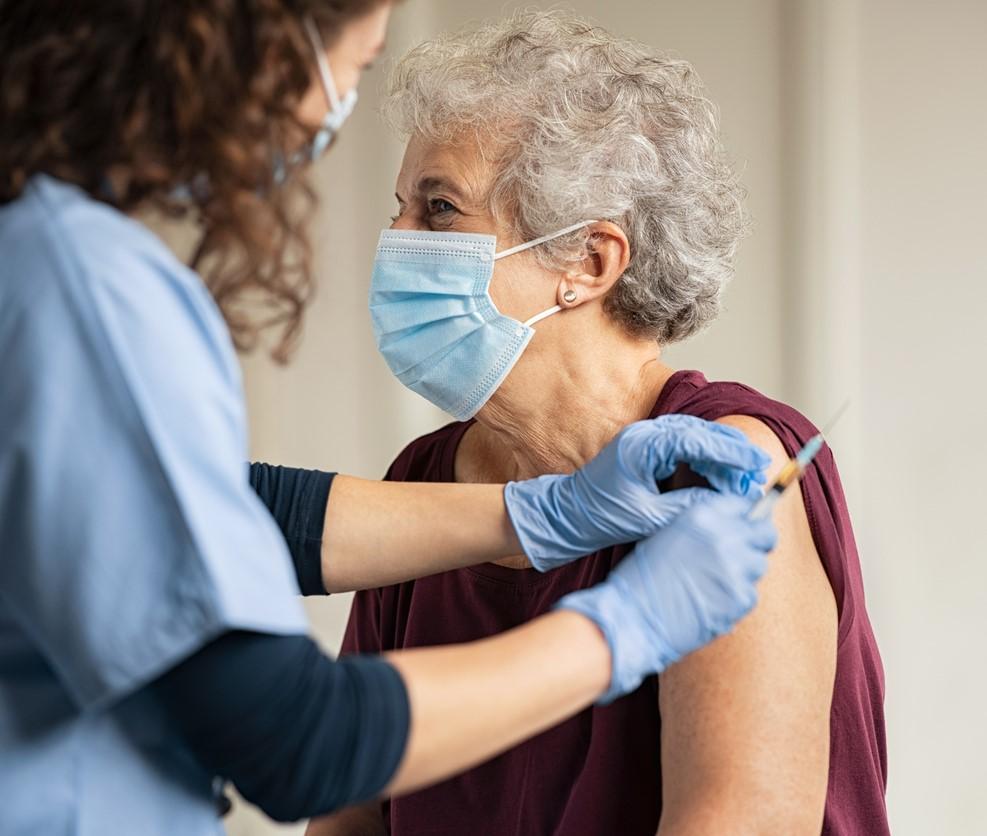"If you got the Pfizer vaccine in January, February or March of this year, and are over 65, go get the booster, or if you are a frontline worker, go get a free booster now. I’ll be getting my booster shot."
That was President Joe Biden's message today, as he briefed the nation on COVID-19 vaccine booster doses.
For Pfizer vaccine recipients, roughly 100 million Americans, a third dose of vaccine is now recommended by the Food and Drug Administration (FDA) and the Centers for Disease Control and Prevention (CDC) for several groups, including those over 65, and those ages 40 to 54 who have underlying medical conditions that put them at risk for severe infection. Those ages 18 to 39 with underlying medical conditions may get a booster, as well.
CDC head goes against ACIP on 1 point
In a media statement late yesterday, CDC Director Rochelle Walensky, MD, MPH, endorsed the recommendations made by the Advisory Committee on Immunization Practices (ACIP) earlier in the day, but she added that people who are exposed to COVID-19 through their jobs, including healthcare workers and teachers, may also get a booster.
That recommendation had failed to get ACIP's endorsement yesterday, during the conclusion of a 2-day meeting for deciding policy on booster doses.
During a White House press briefing today, Walensky explained her rationale for offering boosters to frontline and essential workers and deviating from the ACIP recommendations.
"This was a decision about providing rather than withholding access," Walensky said. "Many of these workers are already living in communities hardest hit by COVID-19."
Still, she emphasized that America "will not boost our way out of the pandemic. This is still a pandemic of the unvaccinated."
Both Biden and Walensky said boosters for the Americans who received the Moderna and Johnson & Johnson vaccines are currently being studied, and a recommendation will be made as soon as possible.
Likewise, Biden said 70 million eligible Americans have yet to be vaccinated against COVID-19, and those people need to begin the vaccine series to protect their lives and to limit strain on hospitals and healthcare workers.
The CDC COVID Data tracker shows that 55% of Americans have been fully vaccinated against COVID-19, and 64% have received at least one dose of vaccine. Children under 12 remain the only Americans not eligible for any COVID-19 vaccines.
CDC shares new school mask data
Also today, the CDC published three new studies in Morbidity and Mortality Weekly Report on the impact of student and staff mask wearing in mitigating K-12 COVID-19 outbreaks. Three separate reports on schools suggest that mask requirements, both in school and in the community, significantly lower COVID-19 spread in school buildings.
"Counties without masking requirements saw the number of pediatric COVID-19 cases increase nearly twice as quickly during this same period," the CDC said in a press release on the findings.
One report showed the average change in pediatric COVID-19 case rates was lower among counties with school mask requirements (16.32 per 100,000/day) compared with counties without school mask requirements (34.85 cases per 100,000/day), during the 2 weeks following the start of school.
Another study based on data from Arizona showed schools were 3.5 times more likely to report COVID-19 outbreaks (defined as two or more connected cases within a 2-week period) if they did not have a mask requirement.
Finally, a nationwide study showed that thus far, 96% of public schools have been able to remain open for full in-person learning.
"Given the high transmissibility of the SARS-CoV-2 B.1.617.2 (Delta) variant, universal masking, in addition to vaccination of all eligible students, staff members, and faculty and implementation of other prevention measures, remains essential to COVID-19 prevention in K–12 settings," the CDC said.
Less than half the people in 18 states vaccinated
Eighteen states have yet to vaccinate at least 50% of their population, according to a CNN analysis of CDC data.
Those states—Alabama, Alaska, Arkansas, Georgia, Idaho, Indiana, Louisiana, Mississippi, Missouri, Montana, North Carolina, North Dakota, Ohio, Oklahoma, South Carolina, Tennessee, West Virginia, and Wyoming—are seeing more COVID-19 hospitalizations and deaths than the top vaccinated states.
Vermont has the highest vaccination rate, 69%, followed by Connecticut, Rhode Island, Massachusetts, and New Jersey.
The United States reported 128,731 new COVID-19 cases yesterday, and 3,157 deaths, according to the Johns Hopkins COVID-19 tracker.
The 7-day average of new COVID-19 cases is 126,101, with 2,046 daily deaths, according to the Washington Post tracker.
Other US developments
- Hospitals and nursing homes in New York are preparing contingency plans in the event that the statewide vaccine mandate for healthcare workers, set to take effect on Sep 27, leads to staff shortages, the Associated Press reported today.
- A new Harris poll shows 58% of vaccinated Americans are concerned about breakthrough coronavirus infections, compared with only 44% of unvaccinated Americans concerned about getting infected, according to Axios.





















